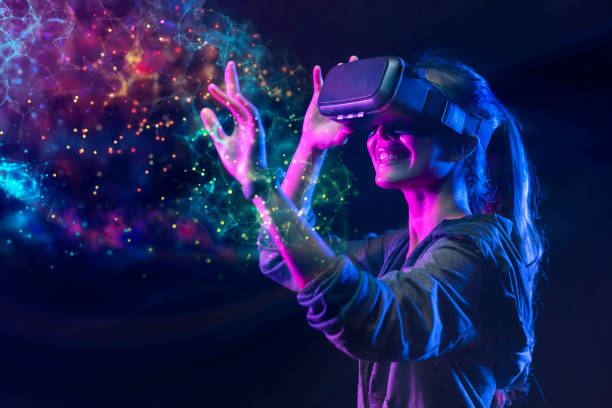Machine Learning (ML) is not just a buzzword; it’s the beating heart of much of the technology we use today. From the self-driving cars on our roads to the personalized recommendations we see on Netflix, ML is the driving force behind many innovations. But what exactly is Machine Learning? Why is it so important? And how does it work?
In this article, we will explore these questions in depth and discover how Machine Learning is transforming the world around us.
Understanding the Basics of Machine Learning
At its core, Machine Learning is a branch of Artificial Intelligence (AI) that focuses on creating algorithms and statistical models that allow computers to improve their performance on tasks without being explicitly programmed. Think about it like teaching a child to ride a bicycle. At first, they may struggle, but the more they practice, the better they become. Similarly, a machine “learns” from data and experience, improving its ability to make predictions or decisions over time.
Machine Learning involves the use of data and algorithms to train a machine to identify patterns, make predictions, and act on new data. It can be thought of as teaching a computer to learn from past experiences and apply that knowledge to new situations.
The History of Machine Learning
The journey of Machine Learning began long before we had the computing power we have today. The term “Machine Learning” was first coined in 1959 by Arthur Samuel, an American computer scientist. Samuel created a program that could learn how to play checkers, improving over time by playing against itself and analyzing the outcomes. This early experiment laid the groundwork for what we now call Machine Learning.
However, it wasn’t until the 1980s and 1990s that Machine Learning began to take off, driven by advances in computing power and the availability of large datasets. Researchers started developing more sophisticated algorithms that could handle vast amounts of data and make predictions based on that data. By the early 2000s, Machine Learning was starting to have real-world applications, from email spam filters to recommendation systems.
Today, Machine Learning is at the forefront of many technological innovations, and its potential is only growing. From the healthcare industry to finance, retail, and even space exploration, ML is being applied to virtually every domain.
The Types of Machine Learning
Machine Learning isn’t a one-size-fits-all field. In fact, there are several types of Machine Learning, each suited to different kinds of problems. The three most common types are supervised learning, unsupervised learning, and reinforcement learning. Let’s explore each of them.
Supervised Learning: Learning with Labels
Supervised learning is the most common form of Machine Learning, and it involves training a model on a labeled dataset. A labeled dataset means that each piece of data in the training set has a corresponding label or outcome that the model should predict. The goal is for the model to learn the relationship between the input data and the output label.
For example, imagine you’re building a model to classify images of cats and dogs. You would provide the model with a dataset of images where each image is labeled as either “cat” or “dog.” The model learns from these examples, and over time, it becomes more accurate at predicting whether a new, unseen image contains a cat or a dog.
Supervised learning can be broken down into two main types:
- Classification: This involves categorizing data into predefined classes. For example, identifying whether an email is spam or not spam.
- Regression: This involves predicting a continuous value based on input data. For example, predicting the price of a house based on features like square footage, number of bedrooms, and location.
Unsupervised Learning: Finding Hidden Patterns
Unsupervised learning, as the name suggests, doesn’t involve labeled data. Instead, the algorithm is given a dataset and tasked with finding patterns and structures within the data without prior knowledge of what those patterns might be.
Unsupervised learning is often used for clustering, anomaly detection, and association. For example, a clustering algorithm might be used to group customers based on purchasing behavior, even though the categories (such as age or income level) are not explicitly provided.
One common technique in unsupervised learning is k-means clustering, where the algorithm groups data points into clusters based on their similarities. Another example is principal component analysis (PCA), which reduces the dimensions of a dataset while preserving its important features.
Reinforcement Learning: Learning Through Trial and Error
Reinforcement learning is a bit different from the other two. Instead of learning from labeled data or finding patterns, reinforcement learning involves an agent (or model) interacting with an environment. The agent takes actions within the environment and receives feedback in the form of rewards or penalties. The goal is for the agent to learn which actions lead to the greatest rewards over time.
Think of it like a video game. The agent is the player, and the game environment gives feedback based on the player’s actions. If the player wins the game, they get a reward (a higher score). If the player loses, they receive a penalty (a lower score). Over time, the agent learns which actions increase its score and tries to maximize the reward by repeating those actions.
Reinforcement learning is used in various applications, including robotics, game-playing AI (like AlphaGo), and autonomous systems like self-driving cars.
How Does Machine Learning Work?
To understand how Machine Learning works, let’s take a closer look at the process of training a model.
1. Data Collection
The first step in any Machine Learning project is gathering data. Data is the raw material that the model will learn from. The quality and quantity of the data are crucial; more diverse and accurate data usually lead to better results. The data can come from a variety of sources, including sensors, databases, user interactions, and more.
2. Data Preprocessing
Once the data is collected, it often needs to be cleaned and preprocessed. This can involve removing irrelevant information, handling missing values, normalizing data, or converting categorical data into numerical format. Data preprocessing is an essential step because poor-quality data can lead to inaccurate models.
3. Choosing the Algorithm
Next, the appropriate Machine Learning algorithm is selected based on the problem at hand. There are numerous algorithms to choose from, including decision trees, neural networks, support vector machines (SVMs), and k-nearest neighbors (KNN). The choice of algorithm depends on the type of data, the complexity of the task, and the desired outcome.
4. Training the Model
Once the algorithm is chosen, the model is trained on the dataset. During this phase, the model adjusts its internal parameters to minimize the error in its predictions. For supervised learning, the model compares its predictions to the actual labels in the dataset and adjusts itself to improve its accuracy.
In the case of unsupervised learning, the model tries to identify patterns without any labels, while in reinforcement learning, the agent learns from the rewards it receives based on its actions.
5. Evaluation
After training, the model is evaluated to see how well it performs on new, unseen data. This step helps identify any issues such as overfitting (where the model performs well on the training data but poorly on new data) or underfitting (where the model fails to capture the patterns in the data).
Evaluation metrics vary depending on the task. For classification tasks, metrics like accuracy, precision, recall, and F1-score are used, while for regression tasks, metrics like mean squared error (MSE) are common.
6. Fine-Tuning and Optimization
After evaluating the model, it may need fine-tuning to improve its performance. This could involve adjusting hyperparameters (settings that control how the model learns), using different features, or experimenting with different algorithms.
7. Deployment
Finally, once the model is trained, evaluated, and optimized, it can be deployed in a real-world setting. This is where the magic happens—where the model can start making predictions and taking actions based on new data.
Applications of Machine Learning
Machine Learning has found applications in virtually every industry, revolutionizing the way we live and work. Let’s explore some of the most exciting and impactful applications of ML.
Healthcare
Machine Learning is making a significant impact in healthcare by improving diagnostics, predicting diseases, and personalizing treatments. ML algorithms can analyze medical images (such as X-rays and MRIs) to detect early signs of diseases like cancer. They can also predict patient outcomes and suggest treatment plans based on historical data.
One notable application is the use of ML in personalized medicine, where algorithms analyze genetic data to recommend treatments tailored to an individual’s unique genetic profile.
Finance
In the finance industry, Machine Learning is used for fraud detection, algorithmic trading, and credit scoring. ML models can analyze transactions in real-time to identify unusual patterns that may indicate fraudulent activity. They can also predict stock market trends based on historical data, allowing traders to make informed decisions.
Retail
Retailers use Machine Learning to optimize inventory management, personalize recommendations, and improve customer service. ML algorithms can predict what products a customer is likely to buy based on their browsing history and past purchases. They can also help retailers determine optimal pricing strategies by analyzing market trends and consumer behavior.
Autonomous Vehicles
Self-driving cars are one of the most exciting applications of Machine Learning. These vehicles use ML algorithms to process data from sensors, cameras, and radars, enabling them to navigate the road, avoid obstacles, and make decisions in real-time.
Entertainment
Streaming platforms like Netflix, Spotify, and YouTube rely heavily on Machine Learning to recommend content to users. By analyzing your viewing or listening history, ML algorithms predict what content you might enjoy next. This creates a more personalized experience, keeping you engaged and satisfied.
Agriculture
Machine Learning is also helping to revolutionize agriculture. ML algorithms can predict crop yields, detect diseases in plants, and optimize farming practices. By analyzing data from sensors and satellite imagery, farmers can make better decisions about irrigation, fertilization, and pest control, ultimately leading to higher yields and more sustainable farming practices.
The Future of Machine Learning
Machine Learning is still in its early stages, and its potential is vast. We are already seeing incredible advancements, from AI that can generate human-like text (such as this article) to robots that can perform complex tasks in real-world environments. But what’s next?
In the future, Machine Learning will continue to drive innovation in areas such as healthcare, autonomous transportation, and smart cities. We may see the rise of more sophisticated AI that can mimic human reasoning, making decisions in complex, dynamic environments. There is also the possibility of achieving “general” artificial intelligence, where machines are not just good at one specific task but can perform a wide variety of tasks as well as, or better than, humans.
However, as Machine Learning continues to advance, there are important ethical and societal considerations to address. Issues such as bias in algorithms, data privacy, and the impact of automation on jobs need to be carefully managed to ensure that the benefits of ML are realized responsibly.
Conclusion
Machine Learning is no longer a futuristic concept—it’s a present-day reality that is transforming industries and improving lives. From healthcare to finance, retail to transportation, ML is making things smarter, more efficient, and more personalized.
While the technology behind Machine Learning is complex, the core idea is simple: teaching machines to learn from data and improve over time. As we continue to develop new algorithms and gather more data, the potential applications of Machine Learning are limitless. It’s an exciting time to be part of the machine learning revolution.






